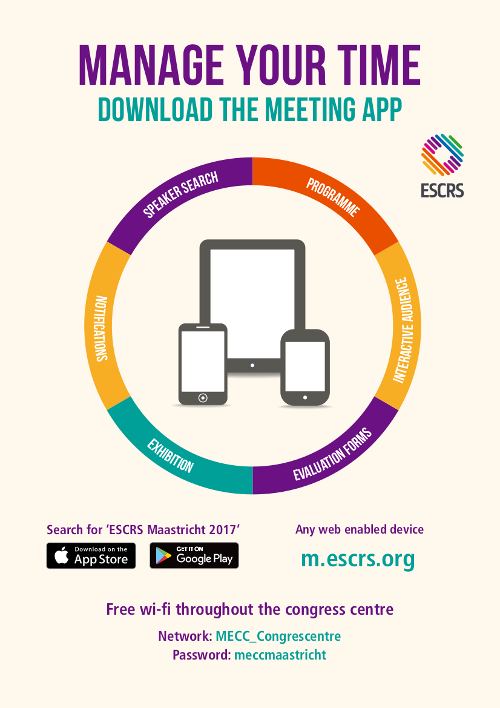Keratoconus progression evaluation
(results will display both Free Papers & Poster)
Session Details
Session Title: Cornea
Session Date/Time: Friday 10/02/2017 | 08:30-10:00
Paper Time: 09:06
Venue: Brussels Room 0.4
First Author: M.Shajari GERMANY
Co Author(s): I. Pavlovic G. Sowwa G. Al Khateeb P. Rafiezadeh T. Kohnen G. Steinwender
Abstract Details
Purpose:
Target of this study was to analyze variables used for evaluation of keratoconus progression. We wanted to find a variable/variables which showed significant progression and could therefore be used for the decision whether a patient should be treated with cross linking.
Setting:
Frankfurt University
Methods:
In this retrospective study we reviewed data generated by Scheimpflug (Pentacam) imaging of 390 eyes of patients with known keratoconus. For evaluation of short term progression initial examination was compared to the examination after 3-9 months. For long term progression initial examination was compared to the examination after 9-24 months. Variables which are used for keratoconus diagnosis were included: D-value, RPImin, ARTmax, Pachymin, Kmax, front curvature in 3mm zone of cone and back curvature in 3mm zone of cone. The difference of two examinations was plotted against the age of each patient to get an age dependent progression curve.
Results:
ARTmax decreased faster in younger patients and showed high difference between short and long term examination. Similar changes where seen for Pachymin. In contrast D value showed faster increase in younger patients and slowed down with time. Large difference was found between short and longterm progression. Kmax did not show any differences in age group below 40 but than decreased rapidly.
A saturation curve was seen for front and back corneal curvature measurments at the 3mm zone away from cone center. After the age of 35 progression was very little for both variables.
Conclusions:
Currently used variables for evaluation of keratoconus progression like Kmax or Pachymin are not appropriate. More recently introduced variables like D-value or corneal curvature in the 3mm zone of the cone are much more accurate.
Financial Disclosure:
None



